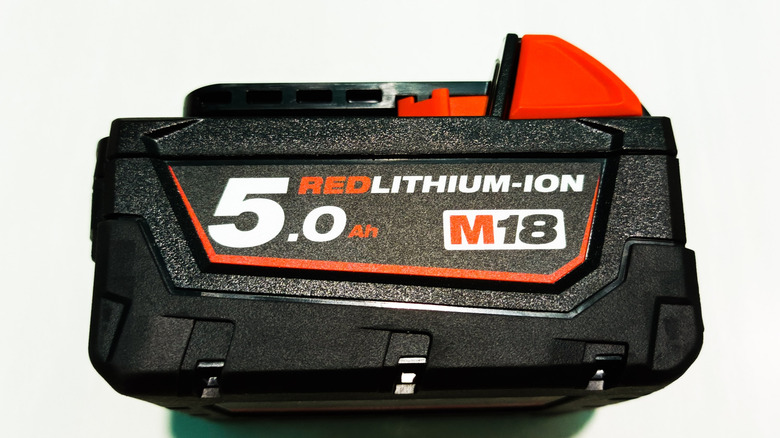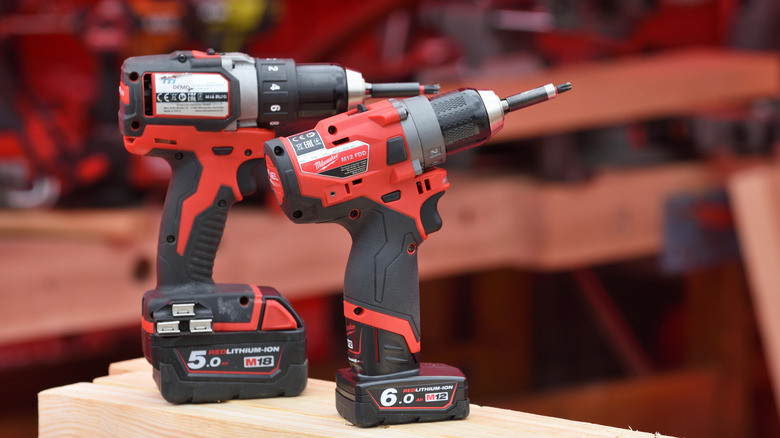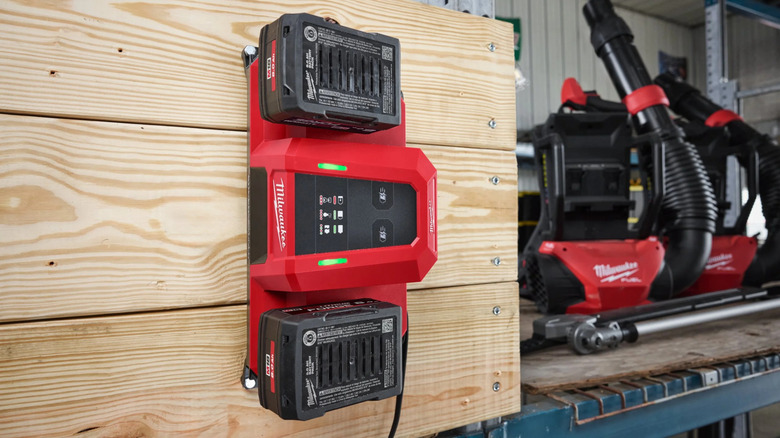How To Clean Your Milwaukee Battery Terminals (And When You Might Need To)
Among the many things to love about Milwaukee are its extensive portfolio of power tools that run on its integrated M12 and M18 battery systems. And while they naturally degrade overtime with normal use, there are steps you can take to keep it at peak functionality for as long as possible. Some straightforward practices include avoiding using your batteries in tandem with third-party chargers and tools, which are not optimized to the same degree as official Milwaukee products. While under the same umbrella, Milwaukee also cautions against using its lithium-ion batteries for tools in other categories such its NiCd systems. If you're already using your unit properly, the next step is making sure its well-maintained.
In its operating manual, Milwaukee shares a ton of helpful tips for optimal battery health, including how to clean it. In general, the power tool manufacturer advises against the use of oil or solvent, which it claims can affect the integrity of the plastic casing. Instead, it recommends using compressed air to get all the particle build up out of the way. Next, with a damp cloth, use only mild soap on parts of your pack, excluding the electrical contacts.
Why you might need to clean your Milwaukee battery terminal
Since battery terminals are essentially the bridge between the unit and your power tool, how clean it is can impact the flow of electricity. A well-maintained unit can improve the overall performance of your product. Not to mention, by cleaning it regularly, you can spot right away if there are any urgent concerns that need your attention. Similar to other electronics, this means preventing battery corrosion by looking out for early telltale signs before they become serious problems. Milwaukee cautions that corrosion can be attributed to improper storage practices, such as keeping it somewhere where it can be exposed to moisture.
If corrosion has begun to take hold, it's might will still work, but not as well as before. If you don't want any unnecessary risks by taking it apart yourself, you can opt to bring your unit to the nearest service center to confirm your suspicions. Apart from fire, Milwaukee warns that damage to its battery could also lead to electric shocks or other forms of injury. The company cautions against burning when disposing of it to avoid generating dangerous fumes that can be accidentally inhaled. Instead, it recommends using electric tape to cover the terminals before sending it to your local electronics recycling facility, wherein they can safely dispose of it.
Tips to take care of your Milwaukee battery system
In the past, we've also gone into detail why you should never fully discharge Milwaukee batteries before using them again. Not only can it lead to making them unusable, but it can even become a fire hazard. This isn't just a problem for Milwaukee, but rather a shared concern for all lithium-ion batteries. Properly storing your lithium-ion batteries helps prevent fires and similarly accidents from occurring, such as not leaving them exposed to the elements. In the same vein, it's important to care for other components of your battery system, such as your charger.
Apart from not exposing your charger to fumes or open flames, Milwaukee also advises keeping it well-ventilated. Similar to the battery terminals, you can use compressed air to accomplish this. Additionally, it's best to inspect the charger cord regularly for damage. The company also recommends separating the charger from the battery and unplugging the charger cord from the socket if it's not going to see any action anytime soon. Milwaukee states that both its charger and battery should be kept at 120°F or less. The manual also mentions only inserting it into the appropriately-rated outlet.


